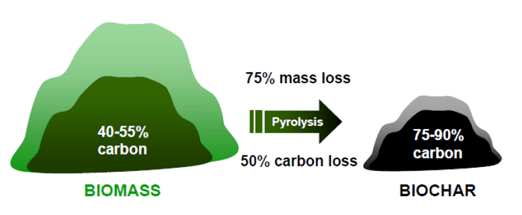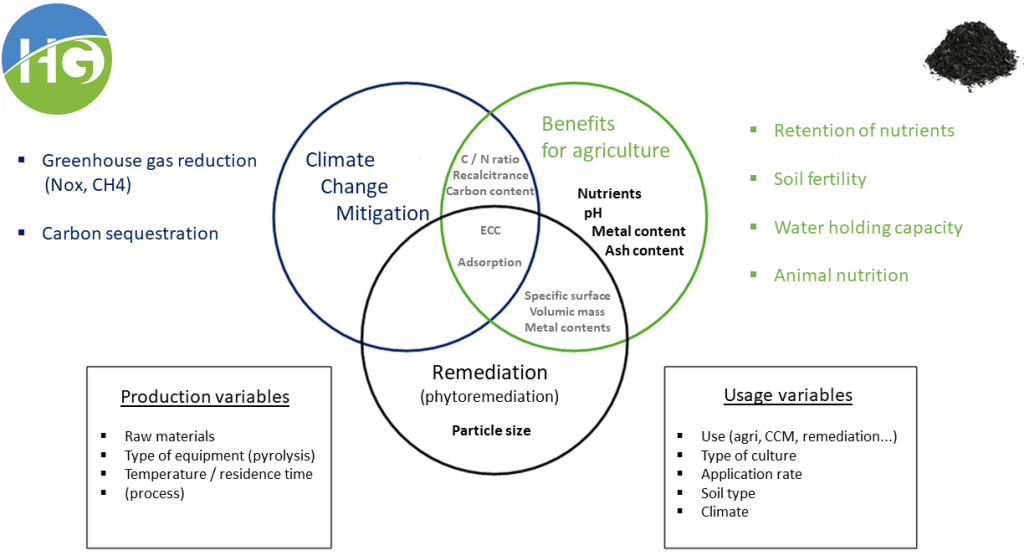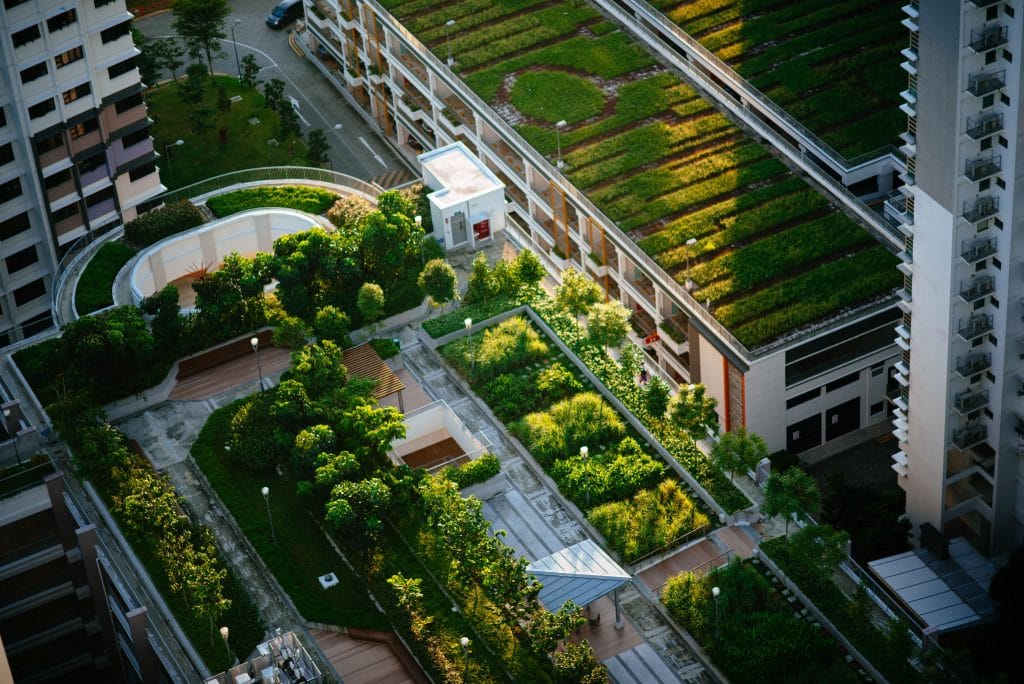This post is also available in: ![]() English
English ![]() Français (French)
Français (French) ![]() Español (Spanish)
Español (Spanish)
What is biochar ?
The term “bio” is in reference to organic residues and “char” for charcoal. Biochar is made by pyrolysis, which involves carbonizing residues in the absence of flame and in very low oxygen concentration. Biochar is a high-carbon form of charcoal.

The characteristics of the biochar(s) are very dependent on the type of biomasses used and the operating conditions during the pyrolysis (temperature, residence time). Databases like the UC Davis can collect valuable information on biochar based on those variables.
The biochar proprieties

Biochar benefits for the horticulture and urban farming
Biochar application to agricultural soils has proved to substantially modify the relationship between plant-soil and lead mostly to a quantitative increase in agricultural production through physical, chemical and biological mechanisms.
More recently, biochar has been used as an ingredient in growing media formulation and positioning itself as a potential alternative for aggregates (e.g., perlite) and peat moss in the growing media industry.
Biochar is not a fertilizer. Most biochars have low levels of nutrients. However, the ability to retain soil nutrients is one of the key properties of biochar (Steiner et al., 2008, Marchetti et al., 2012).

The usage of biochar can be also interesting for the urban farming industry. In fact, green roofs are seen as “privileged areas” for retaining rainwater and reducing the effects of urban heat islands. Beck et al. 2011 evaluated the quantity and quality of water passing over a vegetated roof extensively grown after adding biochar.
Adding biochar to the substrate at 7% (by weight) can be a way to improve the quality of water downstream water by reducing nitrogen, phosphorus, organic carbon concentrations and thus reducing turbidity in runoff… A promising solution for the urban green rooftop !

Sources:
Beck, D. a., Johnson, G. R., & Spolek, G. a., 2011. Amending greenroof soil with biochar to affect runoff water quantity and quality. Environmental Pollution, 159(8-9), pp. 2111-2118.
Marchetti, R., Castelli, F., Orsi, A., Sghedoni, L. et Bochicchio, D. (2012). Biochar from swine manure solids: influence on carbon sequestration and Olsen phosphorus and mineral nitrogen dynamics in soil with and without digestate incorporation. Italian Journal of Agronomy. 7: pp. 189-195.
Steiner, Christoph; Glaser, Bruno; Teixeira, Wenceslau Geraldes; Lehmann, Johannes; Blum, Winfried E. H.; Zech, Wolfgang., 2008. Nitrogen retention and plant uptake on a highly weathered central Amazonian Ferralsol amended with compost and charcoal. In: JOURNAL OF PLANT NUTRITION AND SOIL SCIENCE 171 (6), pp. 893–899. DOI: 10.1002/jpln.200625199.
Steiner, C., & Harttung, T., 2014. Biochar as growing media additive and peat substitute. Solid Earth Discussions, 6, pp. 1023–1035. doi:10.5194/sed-6-1023-2014






Thank you for all the great insight on Biochar !!!! Jonathan Ditto
We produce a 100% biochar soilles growing media, we call it the CompoChar. Look here: https://www.facebook.com/earthbiochar?mibextid=ZbWKwL